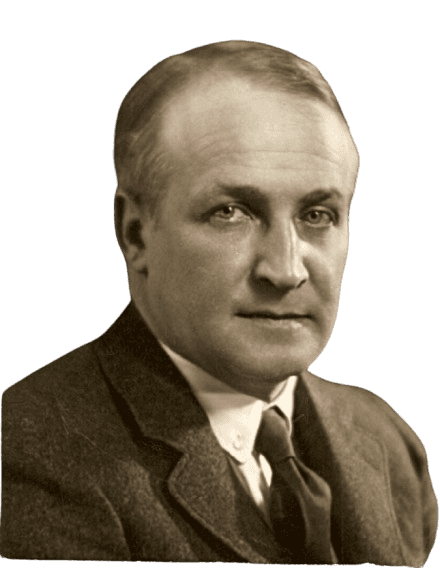Life and achievements
Early life
The subject of our discussion, Robert Joseph Flaherty, was born on February 16, 1884, in Iron Mountain, Michigan, to Irish-German immigrant parents. Robert's father, Robert Henry Flaherty, was an iron ore prospector, and the young Robert used to go with his father on his explorations across North America. These early experiences cultivated in him the spirit of adventure and curiosity for other cultures that would later characterize his filmmaking. He was most interested in the landscapes and the hardy existence of native populations, which led him to want to record their stories.
Flaherty had very little formal education; however, he was interested in photography and thus went to Toronto, where he studied still photography. By 1909, he was involved in numerous expeditions wherein he documented the indigenous people and the landscape. His first significant opportunity came in 1913 when he got a contract to explore the Belcher Islands in Canada's Hudson Bay. While on this trip, Flaherty carried a motion picture camera with him, starting his movie-making. Flaherty's first footage was destroyed in a fire, but his desire to capture the lives of people in the Arctic led to the creation of Nanook of the North.
Legacy
The filmmaker Robert J. Flaherty is rightfully considered the father of the modern documentary. Not only did he invent documentary, but he also gave birth to a new form of visual culture that merged the real and the fictional. His films, especially Nanook of the North, are today in film schools as examples of how to tell a story through cinema. Flaherty's films deviated from the conventional ethnographic films in that the movie focused on the individual and the relationships rather than the culture and practices. This approach altered the audiences' perception of non-fiction films and paved the way for future documentary filmmakers to experiment with more of the interpretational angles of the movie.
Flaherty's contribution does not end with the directorial chair; he was also a cinematographer. Thus, his approach to living among people and earning their trust became a reference point for ethnographic filmmakers. Also, his way of transforming the raw footage into the story is still considered the best as he introduced the narrative approach to documentaries. Although there were criticisms regarding the artificiality of some of his scenes, Flaherty's primary concern on real experience was influential for the documentary. Today, there is still an annual event known as the Robert J. Flaherty Film Seminar which is held in his honor and which is a platform for independent filmmakers to engage in experimental narrative.
Milestone moments
Oct 17, 1913
First Expedition to Hudson Bay
In 1913, Robert J. Flaherty undertook his first significant journey to Hudson Bay, where he was expected to search for iron ore deposits. On this trip, Flaherty carried a Bell and Howell motion picture camera with which he attempted to make his first film about the Eskimo people.
This expedition was the foundation of Flaherty's desire to capture untouched indigenous peoples and severe conditions.
However, most of the footage was lost in a fire, a significant experience in forming his vision as a filmmaker.
During this expedition, Flaherty first dreamed of shooting the daily life of the Eskimos and their struggle for existence, which is the plot of Nanook of the North.
May 21, 1922
Nanook of the North is the first movie to be released
Robert Flaherty released the first documentary feature, Nanook of the North, on June 11, 1922. The film depicted an Inuit man and his family, especially how they lived in the Arctic. The man's name was Nanook.
The narrative approach used in the movie was also unique because the director incorporated both documentary and fictional scenes in Nanook of the North.
It became a box office hit and was well-received by critics, thus making Flaherty a pioneer in the film industry.
This film is the starting point for the documentary film and the basis for future documentary filmmakers.
Mar 6, 1926
Release of Moana
Flaherty's second major film, Moana, was released in 1926. It is an ethnographic film about Samoan islanders. While not as popular as Nanook, Moana was the first film to present the idea of the 'documentary' as defined by John Grierson.
In Flaherty's work, he lived among the Samoan people and documented their rituals and customs.
As with his previous works, Moana combined documentary and fiction to share the narrative of human life in the face of nature.
Although Moana did not reach the same popularity as Nanook, it established Flaherty as a filmmaker who experimented with the ethnographic film genre.
Jan 17, 1934
Man of Aran and Critical Success
In 1934, Flaherty created Man of Aran, a movie depicting the lives of the people of the Aran Islands, Ireland. The film received positive reviews, and many people considered it even more realistic than Nanook of the North in terms of people's struggle against nature.
Like in his earlier productions, Flaherty set up several scenes for the film's purpose: shark hunting and fights with the sea.
Thus, Man of Aran was highly appreciated for its strong visual and narrative impact.
This film became one of Flaherty's most significant works and is considered one of the best examples of early documentary films.
